Gastrointestinal germinal center B cell depletion and reduction in IgA+ plasma cells in HIV-1 infection
- PMID: 39454027
- PMCID: PMC11557871
- DOI: 10.1126/sciimmunol.ado0090
Gastrointestinal germinal center B cell depletion and reduction in IgA+ plasma cells in HIV-1 infection
Abstract
Gastrointestinal (GI) B cells and plasma cells (PCs) are critical to mucosal homeostasis and the host response to HIV-1 infection. Here, high-resolution mapping of human B cells and PCs sampled from the colon and ileum during both viremic and suppressed HIV-1 infection identified a reduction in germinal center (GC) B cells and follicular dendritic cells (FDCs) during HIV-1 viremia. Immunoglobulin A-positive (IgA+) PCs are the major cellular output of intestinal GCs and were significantly reduced during viremic HIV-1 infection. PC-associated transcriptional perturbations, including type I interferon signaling, persisted in antiretroviral therapy (ART)-treated individuals, suggesting ongoing disruption of the intestinal immune milieu during ART. GI humoral immune perturbations were associated with changes in the intestinal microbiome composition and systemic inflammation. These findings highlight a key immune defect in the GI mucosa due to HIV-1 viremia.
Conflict of interest statement
Figures

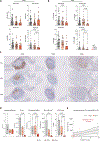
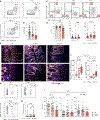
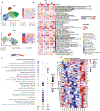
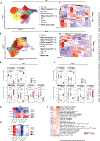
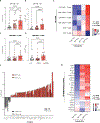
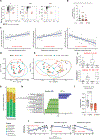
Update of
-
Gastrointestinal germinal center B cell depletion and reduction in IgA + plasma cells in HIV-1 infection.bioRxiv [Preprint]. 2024 Oct 17:2024.05.17.590425. doi: 10.1101/2024.05.17.590425. bioRxiv. 2024. Update in: Sci Immunol. 2024 Oct 25;9(100):eado0090. doi: 10.1126/sciimmunol.ado0090. PMID: 38826293 Free PMC article. Updated. Preprint.
References
-
- Corti D, Lanzavecchia A, Broadly neutralizing antiviral antibodies. Annu. Rev. Immunol. 31, 705–742 (2013). - PubMed
-
- Guadalupe M, Reay E, Sankaran S, Prindiville T, Flamm J, McNeil A, Dandekar S, Severe CD4+ T-cell depletion in gut lymphoid tissue during primary human immunodeficiency virus type 1 infection and substantial delay in restoration following highly active antiretroviral therapy. J. Virol. 77, 11708–11717 (2003). - PMC - PubMed
-
- Li Q, Duan L, Estes JD, Ma ZM, Rourke T, Wang Y, Reilly C, Carlis J, Miller CJ, Haase AT, Peak SIV replication in resting memory CD4+ T cells depletes gut lamina propria CD4+ T cells. Nature 434, 1148–1152 (2005). - PubMed
-
- Veazey RS, DeMaria M, Chalifoux LV, Shvetz DE, Pauley DR, Knight HL, Rosenzweig M, Johnson RP, Desrosiers RC, Lackner AA, Gastrointestinal tract as a major site of CD4+ T cell depletion and viral replication in SIV infection. Science 280, 427–431 (1998). - PubMed
Publication types
MeSH terms
Substances
Grants and funding
- KL2 TR004421/TR/NCATS NIH HHS/United States
- P01 AI071713/AI/NIAID NIH HHS/United States
- R01 DK123749/DK/NIDDK NIH HHS/United States
- R24 AI067039/AI/NIAID NIH HHS/United States
- U01 AI043638/AI/NIAID NIH HHS/United States
- UL1 TR004419/TR/NCATS NIH HHS/United States
- P30 AI027763/AI/NIAID NIH HHS/United States
- UM1 AI068613/AI/NIAID NIH HHS/United States
- P30 CA196521/CA/NCI NIH HHS/United States
- P01 AI074621/AI/NIAID NIH HHS/United States
- R24 AI106039/AI/NIAID NIH HHS/United States
- R01 DK112296/DK/NIDDK NIH HHS/United States
- U24 CA224319/CA/NCI NIH HHS/United States
- U01 DK124165/DK/NIDDK NIH HHS/United States
- R01 AI095068/AI/NIAID NIH HHS/United States
- DP1 HL174182/HL/NHLBI NIH HHS/United States
- R01 HD074511/HD/NICHD NIH HHS/United States
LinkOut - more resources
Full Text Sources
Medical
Molecular Biology Databases
Miscellaneous

